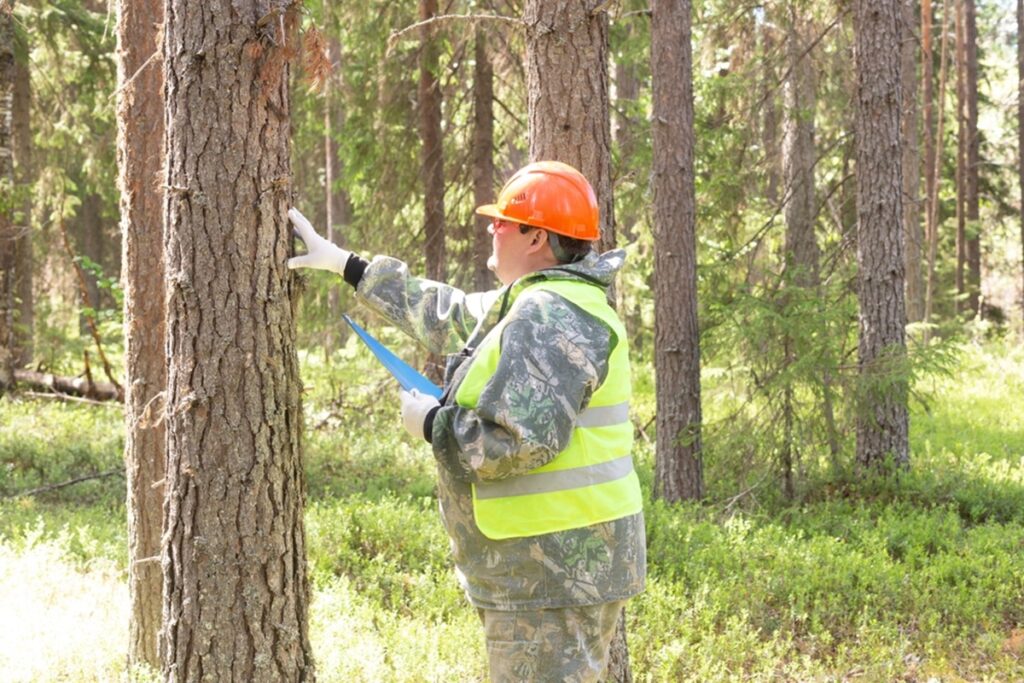Stoke’s historical background and ecological outlook
Stoke-on-Trent, famously known as the Potteries, is a city shaped by its industrial heritage and an evolving focus on sustainable development. As a key centre in Staffordshire, it is undergoing continued urban regeneration, particularly around its town centres, transport links, and former industrial sites. From Fenton to Tunstall and Newcastle-under-Lyme, regeneration efforts are giving new life to the built environment, yet the natural landscape remains vital.
Green infrastructure, including woodlands, parks, and mature street trees, is an integral part of Stoke’s urban fabric. That’s why tree surveys in Stoke-on-Trent are playing an increasingly important role in shaping responsible development across the city.
Whether it’s the established canopy of Hanley Park, the linear corridors along the Trent and Mersey Canal, or localised planting in residential areas such as Penkhull, Sneyd Green or Blurton, trees provide immense value in Stoke. They support wildlife, improve air quality, mitigate urban heat, and enhance wellbeing in both dense and suburban communities.
With Stoke-on-Trent City Council committed to sustainable planning and climate adaptation, tree surveys are now a key requirement for many planning applications and site development strategies. The city’s mixture of urban expansion and legacy brownfield land creates a unique environment where tree constraints must be properly assessed before building can begin.
As in many urban areas across the UK, trees in Stoke-on-Trent may be legally protected through Tree Preservation Orders (TPOs) or by being located within Conservation Areas. Locations such as Hartshill, Longton, Newcastle-under-Lyme and parts of Burslem feature trees with high amenity value and heritage significance.
Where Tree Preservation Orders or Conservation Area protections are in place, landowners or developers must apply for permission before undertaking any tree works, including felling, pruning or root excavation. Ignoring these protections can lead to prosecution or planning enforcement action.
In line with national guidance, Stoke-on-Trent City Council typically requires a professional tree survey when planning applications involve land containing trees. Tree surveys are especially important when planning applications affect protected trees or those located near buildings, roads or utilities.
A tree survey Stoke-on-Trent provides the planning authority with the information it needs to make informed decisions about tree retention, loss, or mitigation as part of the development process. Tree surveys also help developers avoid costly delays by identifying constraints early in the project lifecycle.
Tree Surveys
The British Standard 5837 tree survey is the industry-standard approach used to assess trees in relation to design, demolition, and construction. It follows the guidelines set out in British Standard 5837:2012 and must be carried out by qualified arboricultural consultants. For most development projects in Stoke-on-Trent, BS5837 tree surveys are the minimum requirement if trees are present within or near the site boundary.
During tree surveys, all relevant trees are assessed for species, size, age, health, structural condition and expected life span. Arboricultural consultants will also calculates Root Protection Areas (RPAs) to determine where development activities, such as excavation or heavy machinery, should be avoided.
Tree surveys involve each tree being assigned a category based on its overall quality and contribution to the site, ranging from high-value specimens to those that may be nearing the end of their safe life expectancy. The data gathered helps inform site layout decisions and forms the foundation of any necessary mitigation strategies to enable planning applications to proceed.
Where trees are to be retained on site, the BS5837 survey process leads to the development of practical protection measures. These may include fencing off root zones, adjusting foundation depths, restricting site access routes or using low-impact construction methods near tree roots.
If tree removal is deemed unavoidable, replacement planting or biodiversity enhancements are typically proposed to offset the impact. All findings from tree surveys are compiled into a detailed arboricultural report which forms a key component of the planning submission.

Tree Surveys and Reports
Following tree surveys, arboricultural consultants produce a full tree report suitable for submission to Stoke-on-Trent City Council. The tree survey report includes a Tree Constraints Plan, which shows tree locations, crown spread, and root protection zones in relation to the proposed development project.
Depending on the complexity of the site, supplementary documents may be required, such as an Arboricultural Impact Assessment, Arboricultural Method Statement and a Tree Protection Plan. Tree reports and supporting documents demonstrate how development will take place with minimal harm to retained trees, ensuring compliance with both local and national planning policy.
While planning applications are a major driver for tree surveys in Stoke, other sectors also benefit from professional tree assessments. Schools, housing associations, hospitals and businesses often commission tree surveys and tree risk assessments to meet their duty of care under health and safety regulations.
Identifying tree defects such as decay, structural instability or windthrow risk is essential in preventing accidents and maintaining public safety. With more frequent storms and shifting weather patterns, proactive tree management is becoming a higher priority across Stoke’s built environment.

Arboricultural Services
Our experienced arboricultural consultants can offer expert advice. Whether you are managing a planning application, working on a brownfield redevelopment, or looking to assess the condition of trees on private land, our consultancy can support you.
We deliver expert tree surveys in Stoke-on-Trent, Newcastle-under-Lyme and throughout Staffordshire, offering professional advice tailored to your development project and its planning context.
Our arboricultural team is qualified, experienced in British Standard 5837 tree surveys, and familiar with the local planning authority’s expectations regarding tree reports, helping your project stay compliant and environmentally responsible.
Free Quote: Tree Surveys Stoke-on-Trent
If you need assistance with development-related tree surveys in Stoke-on-Trent or advice on managing trees affected by planning controls, we’re here to help. Contact us for a free, no-obligation quote and to arrange a site visit with one of our experienced arboricultural consultants.
Simply use the contact form on this page or call us directly to discuss your requirements for tree surveys. With the right tree inspections and expert guidance, you can move your project forward while ensuring the long-term health and protection of Stoke’s urban tree cover.